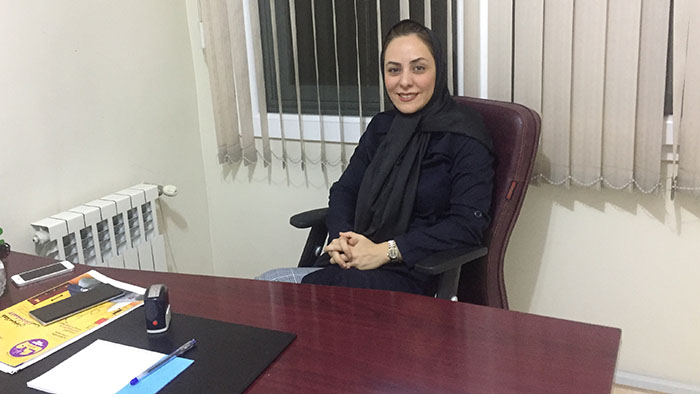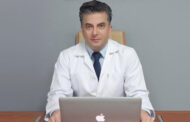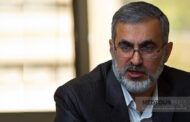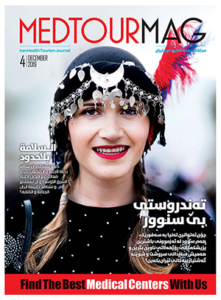A conversation with Dr. Shahrzad Khosravifar, fellow specialist doctor in sleep disorders.
Today the science of medicine has advanced so far that even sleep disorders have an entire specialty dedicated to them in the world of medicine. We sat down with Dr. Shahrzad Khosravi, psychiatrist and fellow specialist in sleep disorders to discuss this school of medicine and its capacities and potential in Iran. Dr. Khosravifar believes that Iran can become a cornerstone for this field on the world stage.
Doctor, please provide us with some background on this branch of medicine, as well explaining what events would prompt a person to visit a somnologist.
“Sleep disorder medicine or somnology is a new branch within the science of medicine which now has been around for close to 50 years. The birthplace of this branch is the Stanford University of Medicine.
Many of the veterans and founding scientists of this field are still alive and well among us. This is a field that constantly continues to evolve and grow.
Now to answer what is somnology and what services are provided by it, we need to familiarize with a concept named “sleep apnea”, sleep apnea is when a sleeping individual faces disorders that cause stoppage in breathing. What the general population usually complains about as snoring, is in fact known to us as breathing stoppage. If and when the count of these stoppages exceeds more than 5 per hour, it can lead to oxygen shortage within the veins that can bring about serious consequences. Including the consequences of these blood pressure issues that are also immune to treatment are, contacting diabetes, precocious vascular heart attacks that are becoming more common among the youth these days, early cases of forgetfulness and depending on the person’s genetics, even early cases of Alzheimer.
Sleep apnea is a disorder that can befall an individual from childhood and cause issues as early as that. This can lead to serious complications such as inadequate growth, malnutrition and serious brain damage.
Sleep apnea is the most important disease in this field of medicine that also has its own special diagnostics methods. There’s also a special method we use named “polysomnography” which puts the patient on our radar during their sleeping hours from nighttime until morning. Sleeping is made up of different components which we analyze through Electroencephalography (EEG), which involves creating a graph based on the patients breathing patterns using a tool that is planted in the patient’s nose in order to detect unusual behavior and patterns during sleep. This way we can properly analyze the patient’s sleep and realize the amount of breathing the patient does in an hour, as well as finding out about other potential problems. Based on all this, we schedule a treatment program for the patient.”
What experiences do you have with non-Iranian patients?
“Due to our field being rather young, we usually receive patients quite randomly especially in the medical tourism area. I have had personal experience in this sphere. A young patient form Azerbaijan, 32, who had extreme snoring issues, visited me. This patient had undergone a nose surgery in Azerbaijan in which he had his septal nasal cartilage removed, interestingly this is considered fashionable in Azerbaijan! The cartilage removal causes the nose to collapse on top of itself. Sleep apnea is related to the upper respiratory tract. That coupled with the patient’s naturally short and wide neck made great potential for sleep apnea to happen. And after the surgery apnea had grown even stronger. The patient had come to Iran to visit a otorhinolaryngologist, and after seeing one, the medic decided based upon the patient’s symptoms, that first he needed a sleep graph drawn, so he referred the patient to me.”
There are other serious cases, such as pregnant mothers. Since during the pregnancy, the mother has to bear the additional weight of the fetus, this can give rise to the apnea which can in some cases, even lead to a miscarriage. Therefore a pregnant mother that is having sleeping issues, needs to be referred to a somnologist by their gynecologist doctor.”
Which diseases and disorders in a person cause them to fully be prompted to visit a somnologist?
“Sleep apnea is a disorder that can befall an individual from childhood and cause issues as early as that. This can lead to serious complications such as inadequate growth, malnutrition and serious brain damage.
Naturally this is of eminent importance. Children with large tonsil are required to go through surgery need to have sleeping tests before the surgery as well as a short while after it. This is done to determine the extent of improvement that the child has experienced by the surgery. If the child has not fully recovered and still suffers from apnea they’ll need to use CPAP; because we know that the hormones related to growth are secreted in nighttime and during sleep, and when the child has issues sleeping due to the apnea, it causes disorder in the secretion of the hormones which causes serious tolls. Even diabetes in children can be caused by the sleep apnea.
Other than children, patients that visit otorhinolaryngologists because of
snoring all are serious cases that need sleep graph tests.
Also patients that want to go through with bariatric surgery. Fatness causes and amplifies the apnea, but that’s not all. The patient requires anesthesia for the operation, which considering their situation can prove to cause numerous intricacies. Hence, they will need a sleep graph test. And even in many cases CPAP is needed to lower the effects of apnea, so then they can be qualified for anesthesia and the subsequent surgery.”
There are other serious cases, such as pregnant mothers. Since during the pregnancy, the mother has to bear the additional weight of the fetus, this can give rise to the apnea which can in some cases, even lead to a miscarriage. Therefore a pregnant mother that is having sleeping issues, needs to be referred to a somnologist by their gynecologist doctor.”
What other symptoms are there caused by sleep disorders?
“Sleep medicine covers a vast area. One of the most serious disorders that fall into this area is sleep apnea. Generally the symptoms for the patients that have sleep disorders are, complications with initially going to sleep, problems with sustained sleep as well as waking up early and trouble going back to sleep, sleepwalking, talking while sleeping, teeth grinding in sleep and nightmares. All these symptoms, when observed, necessitate visiting the doctor.
One of the most major and crucial problems that exists in this area is narcolepsy. These are sudden sleep attacks that might occur during the day to the individual. These attacks are so critical that give the patient little chance, for example the patient might fall asleep while driving. These sleeping intervals last for approximately 10 minutes. This disorder has its own treatments of course. September 22nd, 2019, was the world’s first narcolepsy day, which happened across the globe with the slogan of raising awareness worldwide, which fortunately had Iran partaking and joining this movement in its own right.”
How closely is the sleep medicine associated with psychiatry and psychology?
“Other specialists may not be able to understand the variety of sleep to the extent that psychiatrists and psychologists can, because they come into sleep medicine fellowship from other fields. And since we maintain contacts for four years with our patients and one of their major complaints tends to be insomnia. If a patient that suffers from the borderline personality disorder goes to a somnologist and complains about insomnia, the somnologist subspecialist can identify the issues with greater ease if they have had specialty in psychology beforehand. Same goes with a patient with the COPD disease, which is related to the livers. If they go to a somnologist that has had experience in the field of hepatology, the somologist would be able to examine them much more coherently and with better understanding.
Subspecialty of sleep medicine is a multidisciplinary field. Specialists in the fields of neurology, psychiatry, anesthetics, hepatology, etc., can enter this area.”





